
It was late July when three secretive men charged with a near-impossible mission believed they were finally on the cusp of a breakthrough.
The US spy chief, the head of Egyptian intelligence and Qatar’s prime minister arrived on a summer day at a private Qatari-owned villa in Rome, convinced that a ceasefire between Israel and Hamas was tantalisingly close.
In the wake of Hamas’s October 7 attack and Israel’s subsequent offensive in Gaza, the negotiators had relentlessly nudged, cajoled and pressured both parties to accept an agreement that would secure the release of Israeli hostages and a permanent end to war in the besieged Palestinian enclave.
The trio had known each other for years. CIA director Bill Burns is a veteran American diplomat serving his fourth US president, and was charged by Joe Biden with ending a war that has divided the Democratic party and stoked turmoil on US university campuses.
Qatar’s soft-spoken Sheikh Mohammed bin Abdulrahman al-Thani has helped establish the gas-rich Qatar state as a go-to mediator in various crises, and none mattered to him more than ending a war in his own backyard.

Abbas Kamel, an Egyptian general who typically operates from the shadows, had perhaps the greatest incentive to play the peacemaker: Egypt had long suspected that Israel’s intention in Gaza was to force the 2mn Palestinians there across the border to his own country.
The signs augured well for the meeting. Earlier that month, Hamas’s chief negotiator Ismail Haniyeh, the group’s political leader who lived in exile in Doha, had informed them that the Palestinian militants were willing to soften one of the group’s key demands, removing a significant barrier to a deal.
Haniyeh was the go-between with Yahya Sinwar, the mastermind of the October 7 attack and Israel’s most wanted man. Hiding in the Gaza tunnels, Sinwar had an elaborate communications technique, and it could take anything from one or two days to two weeks to pass messages back and forth.
But the Rome meeting did not go as planned. Israel’s lead negotiator David Barnea, head of Israel’s intelligence agency Mossad, presented a “clarification” document, says a diplomat briefed on the talks. Any optimism rapidly drained away, and the mood became “very tense”. Israel’s position had hardened — now a slither of land along the Gaza-Egyptian border had become the main roadblock to a deal.
Israeli Prime Minister Benjamin Netanyahu had reneged on assurances Israel had given mediators that it would withdraw troops from the Philadelphi corridor, a 14-km strip that runs along the frontier Gaza shares with Egypt, according to an official involved in the negotiations. The corridor includes the Rafah crossing, the only exit and entry point to the enclave not controlled by Israel before the war.
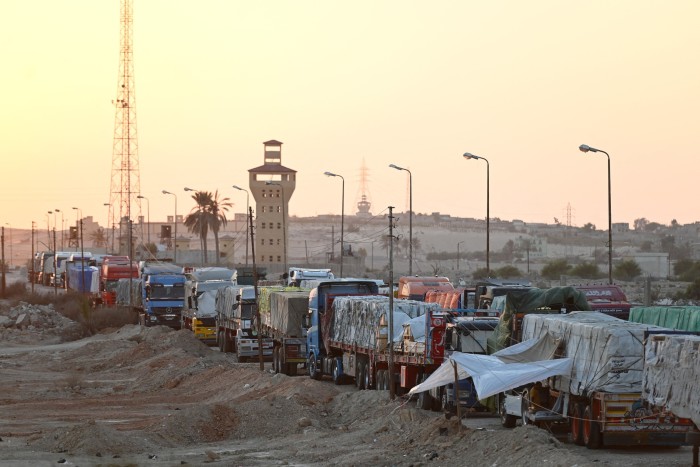
The mediators’ despair deepened three days later, as the talks suffered another blow: Haniyeh was assassinated in a suspected Israeli attack, killed in an explosion at the state-run guest house in Tehran, just hours after attending the swearing-in of Iran’s new president.
The killing of the Hamas negotiator was part of a chain of events that would widen the conflict, rather than contain it, as the three men had planned.
From the outset, western and Arab states have believed that inking a deal to halt the conflict in Gaza was the only viable way to prevent all-out war in the Middle East.
For some involved in the mediation, the events in July were signs of what they had long feared: Netanyahu had no intention of agreeing to a ceasefire and instead was bent on scuppering the process, undermining Barnea by repeatedly coming up with new conditions.
“As the efforts and work by the mediators continues, under these complex and complicated circumstances . . . it has become evidently clear that Netanyahu is working hard to sabotage those efforts,” an official involved in the negotiations says.
Since the July meeting in Rome, the talks have been deadlocked. Instead, as Israel marked the grim anniversary of Hamas’s October 7 attack, during which the militants killed 1,200 people and seized 250 hostages, the Middle East has edged ever closer to the wider war the mediators hoped to avoid.
The negotiations, meanwhile, are as “far today as ever” from reaching an agreement, says the official involved in the negotiations.
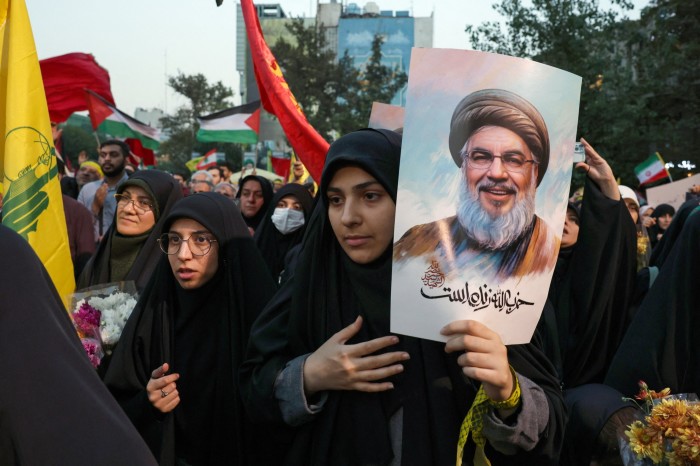
Another person briefed on the diplomatic efforts says: “We’ve all lost the horizon and don’t know where we’re going, like being in the open sea without seeing the shore.”
US officials still insisted they would not give up, weeks after the July meeting. Last month, they said they would make a final push in the hope of reviving the talks. Speaking at the UN General Assembly in New York, Biden said: “Now is the time for the parties to finalise its terms, bring the hostages home . . . ease the suffering in Gaza, and end this war”.
Three days after Biden spoke, Israel assassinated Hassan Nasrallah, the chief of Lebanon’s Hizbollah, one of Israel’s most potent foes.
Western and Arab diplomats have said that Hizbollah was not involved or had prior knowledge of Hamas’s October 7 attack, but it had joined the Palestinian militants in attacking Israel days later, launching rockets into northern Israel and displacing 60,000 Israelis living across the border from Lebanon. Nasrallah would give up his fight, he repeatedly said, only when Israel agreed to a ceasefire deal in Gaza.
The assassination of Nasrallah, who was considered by Iran’s supreme leader, Ayatollah Ali Khamenei, as a son, provoked a muscular Iranian response.
Iran last week fired more than 180 missiles at Israel in retaliation for the killings of Haniyeh and Nasrallah, and the region is now braced for Netanyahu’s response.
In recent days Israel has escalated its offensive against Hizbollah, invading Lebanon’s south, while deflecting attention from Gaza, where the Israeli offensive has killed more than 42,000 people, according to Palestinian officials.
The ceasefire that might have prevented the Gaza war morphing into a multi-front conflict is no longer a consideration.
Israel and the US have put the blame for the failure of ceasefire talks squarely on Hamas. Qatar and Egypt have vented their frustration with Netanyahu, accusing him of impeding the diplomatic process and falsifying facts to mislead world opinion.
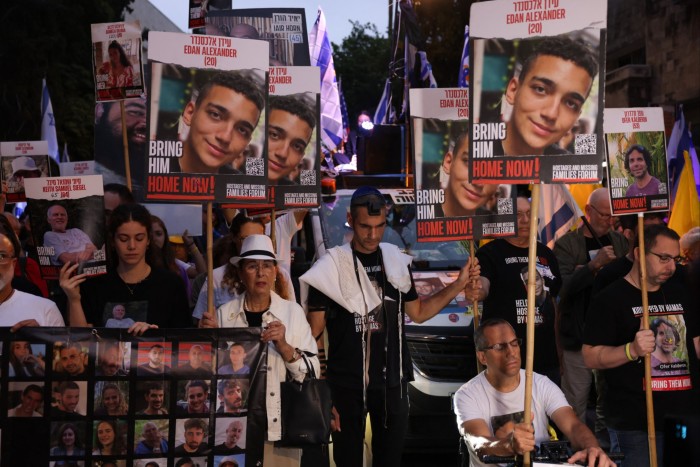
Concealed in Gaza, Sinwar has indeed played hardball. He has shifted Hamas’s position, particularly on the Palestinian prisoners that Israel would have to release in exchange for hostages, with the group constantly wary of agreeing to a deal only for Netanyahu to resume the war.
Diplomats say that he has been willing to have a ceasefire deal on his own terms, but equally willing to keep the hostages in his possession and deny Israel any semblance of victory in the war.
“The only card Hamas has is the hostages. That’s their insurance policy, and they are not going to give it up unless they get something in exchange. Israel, since the beginning, has not been willing to pay the political price to free the hostages,” says an Egyptian official. “Hamas are desperate . . . but if they have no guarantee of the end of the war . . . they will not give the hostages up.”
Getting Sinwar to engage in talks in the first place was a struggle. After the mediators first floated their three-phase plan to end the war and free the hostages in January, Hamas refused to engage in any talks without a declaration of a permanent end to the war and the withdrawal of Israeli troops from Gaza.
Netanyahu, meanwhile, insisted on pursuing “total victory” against Hamas and that Israel would only agree to a temporary truce.
By the end of May, Biden sought to inject momentum into the process by publicly endorsing the outline of the proposal to bring what he described as a “durable end” to the war.
This included a six-week initial pause in hostilities, during which Hamas would release women captives, the elderly and the wounded in exchange for hundreds of Palestinian prisoners, and Israel would pull back from all Gaza’s populated areas. In this phase, the parties would negotiate the arrangements to get to the second stage, which “is a permanent end to hostilities,” the release of all remaining hostages and the full withdrawal of Israeli troops from Gaza, Biden said.
Israel approved the proposal, Biden said, while urging Hamas to do likewise. It was on the basis of that outline that the mediators believed they could have reached a ceasefire, before the fateful Rome meeting in July.
Despite the obstacles placed in his way, Burns gave it another shot.
The CIA chief, Sheikh Mohammed and Kamel held talks with Barnea in the Qatari prime minister’s office in Doha in August. US secretary of state Antony Blinken then met Netanyahu in Tel Aviv and said he had endorsed the mediators’ proposal to bridge the gaps between the warring parties. In this scenario, Israel would not leave the Philadelphi corridor completely, but would retain a “reduced” presence there.
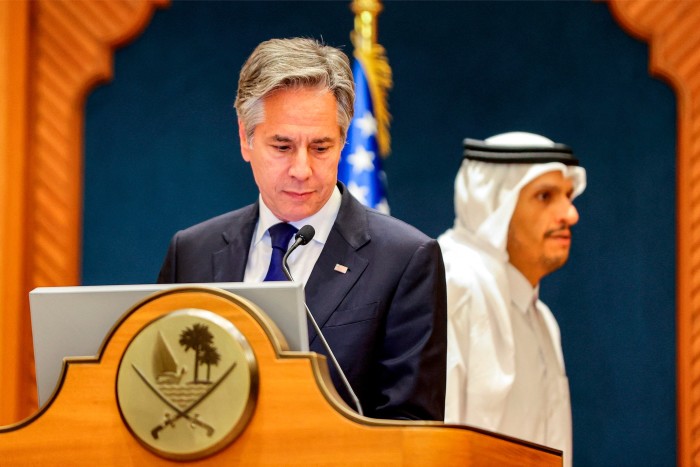
But the efforts only underscored how entrenched the divide has become. Within hours of Blinken flying out of Israel, Netanyahu doubled down, insisting he was not ready to withdraw from the strip of border “in the face of domestic and foreign pressures”.
“Netanyahu moved the goalposts, and American policy moved with them,” says one former senior western official. “It was pretty embarrassing”.
Since the summer, Egypt and Qatar have increasingly aired their frustrations with Netanyahu in public.
Yet even some American officials suspect that Netanyahu has made a decision to wait for the US presidential elections before contemplating a ceasefire agreement. Some believe the prime minister is betting on a victory for Donald Trump, believing the former president, who upended decades of US policy to gift Netanyahu a number of wins during his term in office, would better suit his interests.
“It does look like a very difficult hill to climb between now and the elections. I do think Benjamin Netanyahu wants Trump to win, and I think that there’s likely political considerations that Netanyahu is making when it comes to whether or not he agrees to a ceasefire,” says Democratic Senator Chris Murphy, a member of the Senate foreign relations committee.
Gal Hirsch, Netanyahu’s co-ordinator for the hostages, says laying the blame on the prime minister was a “false narrative that is unfortunately working professionally inside Israeli society and in some cases worldwide”. “When people say that . . . there is not enough rope, there is not enough mandate [for Barnea], I won’t agree with that,” Hirsch says.
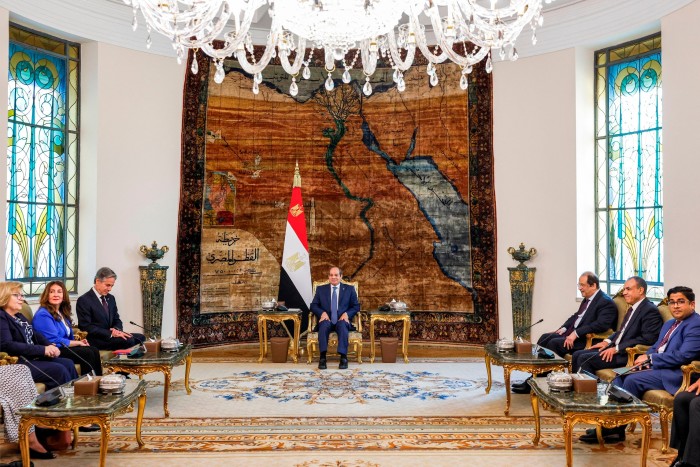
Yet even Barnea, defence minister Yoav Gallant and other members of Israel’s negotiating team also privately blamed Netanyahu for holding up the process after the July meeting, people familiar with their position say.
They have argued that it was in Israel’s interests to agree to the deal, as Hamas’s military capacity has been severely depleted and as the window to save the remaining hostages narrows. More than 100 are still held in Gaza, but many are believed to be dead.
“Achieving an agreement is also a strategic opportunity that gives us a high chance to change the security situation on all fronts,” Gallant told reporters last month.
Netanyahu’s critics accuse him of putting his political survival ahead of the hostages, citing his dependence on far-right allies who have threatened to topple the government if he signs off on a deal they describe as “reckless”.
But after Hamas brutally executed six hostages last month, prompting the biggest protests in Israel since the start of the war as hundreds of thousands of people urged Netanyahu to reach an agreement, the prime minister insisted he would not “surrender” to pressure.
“When we have our boot on [Hamas’s] skull, that’s when they want us to make concessions?” he said after the protests. “When [Hamas] understands we’re not ending the war, they’ll give in.”
Sinwar too has hardened his position on the release of Palestinian prisoners, US officials say, perhaps knowing that there would be no deal.
Aaron David Miller, a former state department official now at the Carnegie Endowment, says the Biden administration “bet the farm and everything else on a ceasefire in Gaza, but to do that you couldn’t go to war with Netanyahu,” explaining why Washington has not put more pressure on Israel.
“I’ve been around Arab-Israeli negotiations for a long time. They work when the two primary decision makers are in a hurry, where there’s urgency. There is no urgency. Sinwar and Netanyahu would prefer no agreement,” Miller says. “The only party that’s in a hurry is the Biden administration and their clock is not in sync with Sinwar’s and Netanyahu’s. As a consequence you get what you now see.”